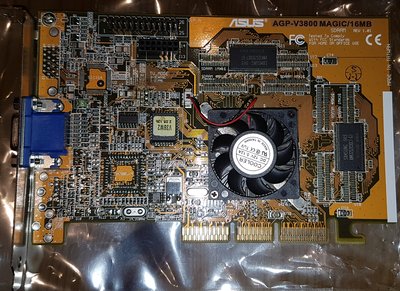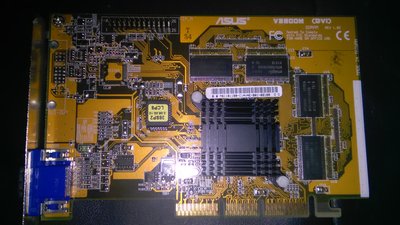First post, by athlon-power
- Rank
- Member
I know that the multiple threads about this, and that in the same system that I've been posting about for months now is probably getting annoying, but I'd like to figure out what to do in this situation. My ASUS AGP-V3800M 32MB (basically a nVidia TNT2 M64) has quite a small heatsink on it, and that heatsink gets hot. I know that it's probably not a good idea to measure temps on the heatsinks by lightly touching them, but it's really all I can do, seeing as the motherboard I have (Intel SE440BX-2) doesn't seem to have inbuilt temperature monitoring, let alone the ASUS card itself. I also don't own anything like a laser thermometer, but I really wish I did.
Anyways, the heat sink on it is quite hot- I can only touch it for 2 or 3 seconds before it starts burning me when it's at full load. It's very odd, because during this, there's zero graphical artifacting, and it runs things like Half-Life and 3DMark 99MAX just fine, as if the cooling was great- with the heatsink not hesitating to burn my finger after a small amount of time, and that's with me lightly touching it.
I did replace the old, dried thermal paste with some Arctic Silver stuff I had, and gauging from how quickly the heatsink starts working (I can feel a small amount of heat ~20 after bootup), I think the Arctic Silver is doing its job. I just can't imagine the chip itself being cooled properly when the heatsink's that hot. I also have no idea as to why they put such a tiny heatsink on there, if it gets that hot. I don't have any fans that I can use for the front panel without the machine sounding like a wind-tunnel, but I do have a 180mm fan that I can put in front of the cards. It's just that the fan isn't mounted anywhere, and so is loose. I have to set the fan flat on the bottom when I move the case, so that it doesn't fall over. I'm not sure if I should keep the 180mm fan, and have a loose item inside the case, or just have the rear exhaust and processor fans move all the air throughout the case. Because of how small the heatsink is, and because of how well it runs, even at these seemingly very high temperatures, it does make me wonder if it's just fine running at that heat level, and if I can safely leave it alone.
Where am I?

